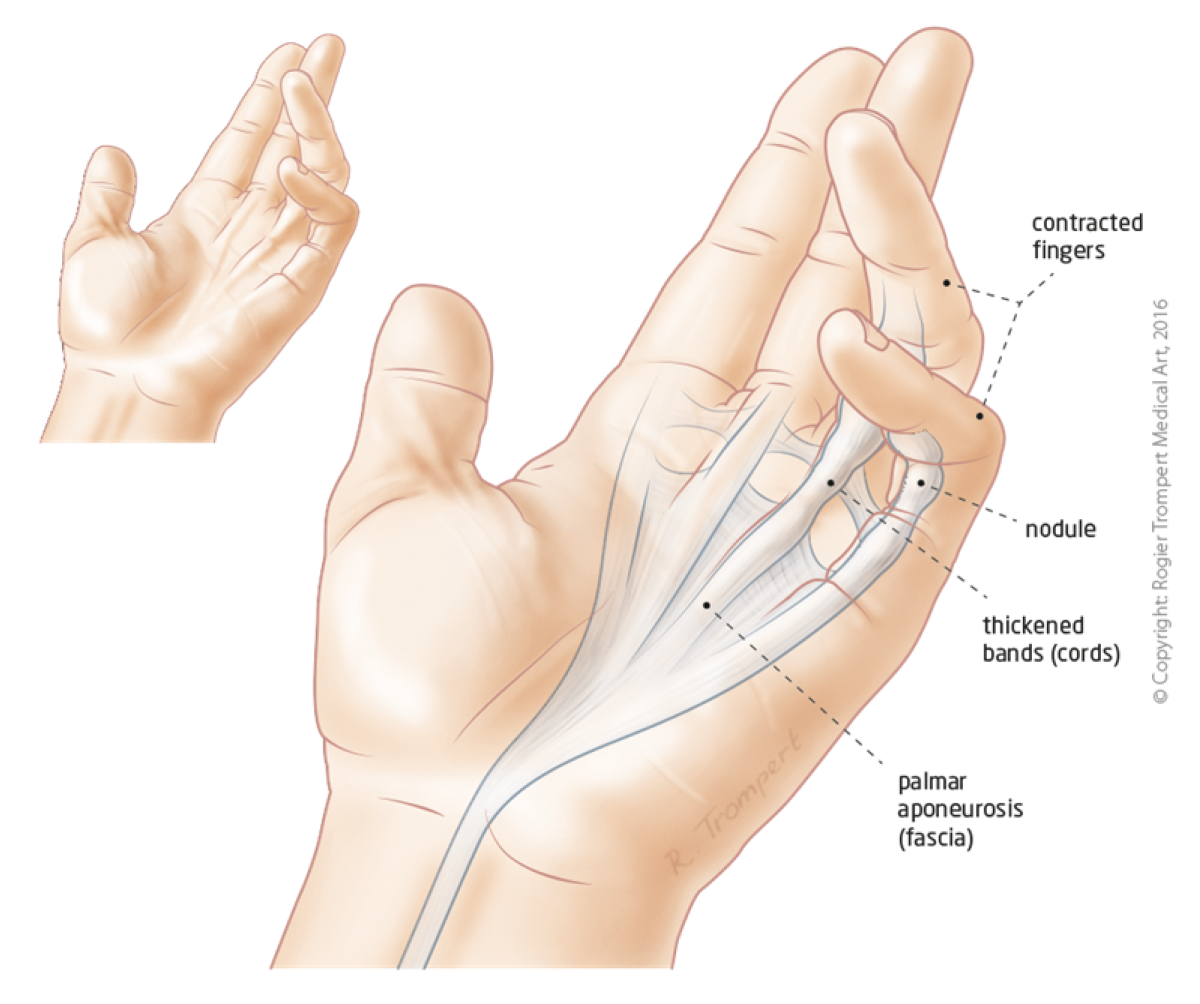Treatment options for Dupuytren's disease
Dr. van Minnen offers treatment options for Dupuytren's disease to suit your needs and expectations.
Treatments include day surgery and minimally invasive surgery (needle fasciotomy). Collagenase (enzyme) injections are no longer available in Australia.

Treatment of Dupuytren's Contracture
Dupuytren’s disease cannot be cured, but the symptoms can be treated operatively or non-operatively depending on the severity, patient wishes and expectations.
Treatment of Dupuytren’s disease can be considered if the nodules become too bothersome or when the cords prevent the hand to be placed flat on a table surface (table top test).
Dupuytren's disease can be treated operatively or non-operatively.
The standard treatment of Dupuytren’s contractures is surgical removal of the fibrous tissue from the palm and fingers (selective fasciectomy). In this procedure, a zig-zag incision is made over the cord of fibrous tissue, the tissue is removed and the finger straightened.
Recurrence of a contracture in the same finger is lowest for this procedure. Downsides are the wound / scar, the sutures that need removal and a 2-6 week recovery period.
In selected cases, a minimally invasive surgical procedure can be an acceptable treatment option. Using a needle to scratch and weaken the fibrous cord can weaken it enough to straighten the finger (needle fasciotomy). Fibrous tissue is not removed, making recurrence more frequent or quicker. The advantage is the lack of a surgical wound and shorter recovery time.
